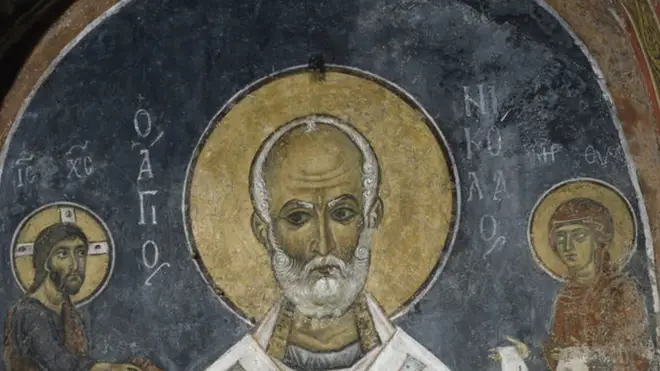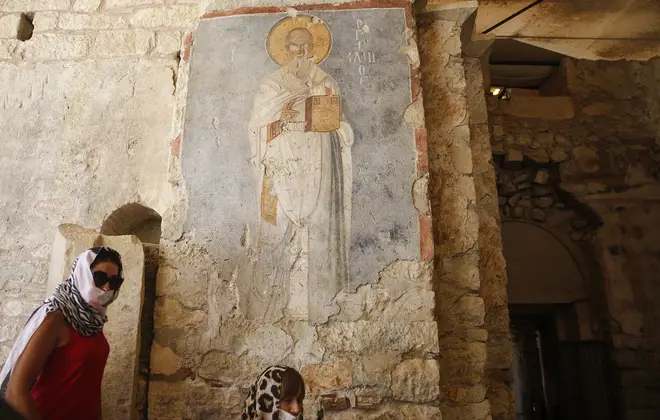
Tom Swarbrick 4pm - 6pm
19 October 2022, 00:55 | Updated: 19 October 2022, 00:57

The tomb of St Nicholas, the man credited as the inspiration for Santa Claus, has been uncovered in an ancient church in Turkey.
The church in Demre, a town in the Antalya district in the south of Turkey was covered by rising sea levels in the Mediterranean centuries ago.
Another church was built on top of the original building to protect St Nicholas' tomb. Archaeologists only recently found mosaics and stone flooring underneath, which helped them find the original church and St Nicholas' grave.

Osman Eravsar, the head of the provincial cultural heritage preservation board in Antalya, told Demirören News Agency : "The first church was submerged with the rise of the Mediterranean Sea, and some centuries later, a new church was built above.
"Now we have reached the remains of the first church and the floor on which Saint Nicholas stepped.
"The tiling of the floor of the first church, on which Saint Nicholas walked, has been unearthed."

St Nicholas, who lived in what is now Turkey between 270 and 343 AD, was a Christian bishop of Greek origin.
Although little information about his life remains, he was famous during his life for the miracles supporters claimed he wrought - and his legendary generosity.
He is thought to be the origin of the Santa Claus figure, after a story about him giving three poor young sisters a bag of gold coins each, so they would have a dowry for marriage.
But to save them the embarrassment of being given money in public, the legend has it that St Nicholas crept up to their windows in the middle of the night and threw the gold into their bedrooms.

Santa has a boyfriend in 2021 Christmas advert for Norway's national postage service
The father of the three young women is said to have found St Nicholas delivering the second bag of gold, and was very grateful, but St Nicholas made him promise not to tell anyone.
Read more: Woman gets compensation after 'being sandwiched between two obese people' on flight
It is unclear if the story is historically accurate, but it was passed through the generations. The name Santa Claus comes from the Dutch term Sinter Klaas, a short form of Sint Nikolaas - the Dutch version of his name.
Read more: Suella Braverman slams 'Guardian-reading, tofu-eating wokerati' for eco-protest chaos
There was previously little information about where exactly St Nicholas was buried, although records show that he was lain to rest somewhere in the church that bears his name.
Previously archaeologists believed that his relics were taken by looters to Bari in Italy, although now the consensus is that the raiders took the wrong bones.